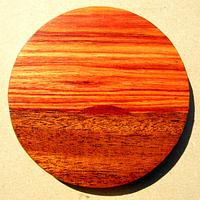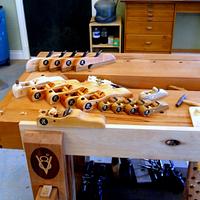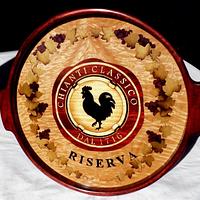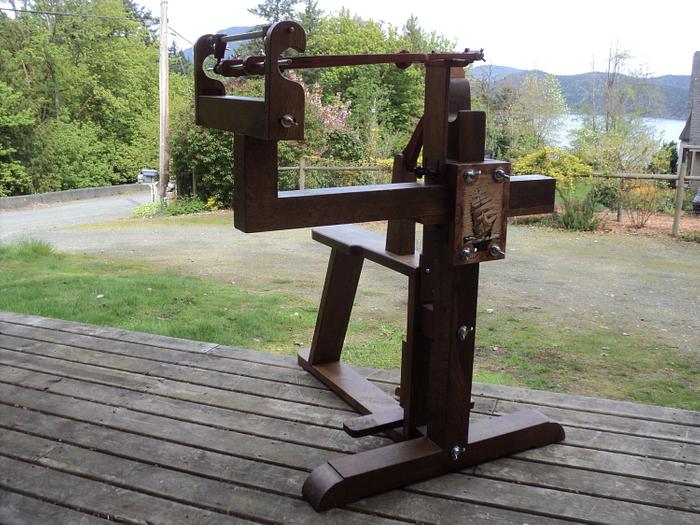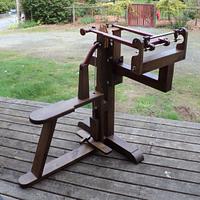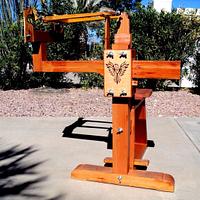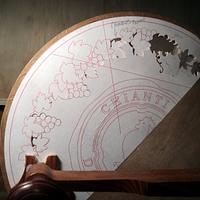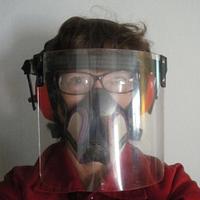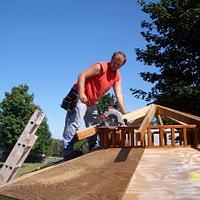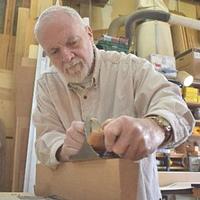
shipwright
in over 11 years
More from shipwright
My Chevalets
When I started getting into marquetry I tried routers first and then a scroll saw. They both worked but left me looking for better control to do really fine work. I remembered seeing a hand operated saw in Sorrento Italy several years earlier and after many hours searching the internet I found four photos and one grainy video of the “Chevalet de Marqueterie”. Armed with these, I built my first one at my winter place in Az from a recycled Douglas Fir beam. A few months later I built my second at my home in BC. It is made from salvaged Garry Oak.
They both worked amazingly well right off the bat. Now I wouldn’t even think of cutting marquetry with anything else.
They are a lot easier to find on the internet now, only a few years later and lots of people are building and using them. Since I had sort of “designed my own” I posted a sketchup model in case others wanted to build one. I have since found plans for them in the back of Pierre Ramond’s book “Marquetry” and have attended the American School of French Marquetry where Patrick Edwards sells plans and hardware kits as well.
Interestingly mine are almost exactly like the originals.
The chevalet is an invention of the guild of ebinistes in Paris about two hundred years ago. They kept it as a closely guarded secret for many years.
Here are a couple of little videos of how they work.
Thanks for looking
I’ll be happy to answer any questions or help anyone who wants to build one.
I have lots of photos.
The early bird gets the worm but its the second mouse that gets the cheese.
15 Comments
I watched the videos sometimes ago and re-watched just now an I must say there is a lot of foot and hand coordination that goes in the cut.
That is a complex piece of machinery.
Abbas, Castro Valley, CA
I have built a chevalet from Paul’s (Shipwright’s) plans Here and it works perfectly, so you really don’t need to spend a lot of money for plans or hardware. I used Paul’s Sketchup drawings. They have all the dimensions and they are accurate. I had a bit of a hard time seeing them because my eyesight isn’t the best so where I couldn’t see the included dimensions clearly I just used the Sketchup tape tool to measure them. The chevy looks complicated, but it was not difficult to build from a technical standpoint. It is just a series of simple smaller projects that are assembled together, although I have to say that building one from scratch that actually works with just a photo or two like Paul did was quite a feat. My chevy cost me about $300 all together, and almost all of that was for the maple materials which are pretty costly here in Norway. I do not find the Chevy difficult to use and it is capable of some extremely accurate work with a little practice.
Mike, an American living in Norway
That is an exercise in extreme patience. Where do the blades cone from?
Losing fingers since 1969
I just completed my own chevalet this week. I hope to have something to show for it in the not too distant future. Also, I second everything Paul says about this remarkable tool. We owe many thanks to both Paul and Patrick Edwards for bringing this golden age tool back into our vocabulary… and our shops.
Roger
Thanks Mike and Roger.
Brian, I use 160 mm Pebeco blades available from Niqua in Germany or Patrick at ASFM in the USA.
Scroll saw blades aren’t generally available in that length so sources are limited but the length of stroke they allow makes a big difference to the smoothness of curves attainable.
The early bird gets the worm but its the second mouse that gets the cheese.
Must be nice to work with a tool that you built and produce those excellent results .
Having built some of my own tools lets me appreciate the feeling .
Well done and it seems to last in the long run without any issues .
Klaus
Starting to hate you a bit. Builds his own sailboat….makes his own saw thing…I bet he can’t dance!
Seriously, I’m sort of thinking maybe it’s a good idea and as I do some engraving in slates…I might have the hand for this.. so… soon, maybe….maybe.
-- Alec (Friends call me Wolf, no idea why)
Paul,
Until I saw your chevys, my favorite was my 1965 Impala. Now I like yours better! (What’s the correct plural of chevy?)
L/W
“Those who would give up essential Liberty, to purchase a little temporary Safety, deserve neither Liberty nor Safety.” Benjamin Franklin
Paul,
Until I saw your chevys, my favorite was my 1965 Impala. Now I like yours better! (What’s the correct plural of chevy?)
L/W
“Those who would give up essential Liberty, to purchase a little temporary Safety, deserve neither Liberty nor Safety.” Benjamin Franklin
Well, I couldn’t get it to post. It kept kicking me out and telling me I wasn’t authorized and each time I would have to sign in again. Now it posts twice, so I might just as well add a 3rd post!
L/W
“Those who would give up essential Liberty, to purchase a little temporary Safety, deserve neither Liberty nor Safety.” Benjamin Franklin
Thanks for the comment(s) L/W.
I hope no one accuses me of paying you to boost my post count ……… :-)
The early bird gets the worm but its the second mouse that gets the cheese.
I never get tired of seeing a chevy in action. It really shows how you can have much more control cutting as opposed to using a scroll saw, well for me anyway.
-- Paul--- Creativity is allowing yourself to make mistakes. Art is knowing which ones to keep. — Scott Adams
Before you posted this, I always imagined you cutting all those tiny pieces out with an exacto knife and a magnifying glass. I had no idea the chevalet even existed. This has revived my interest and rekindled my hopes of actually being able to do it. I believe a chevalet is now on my list of projects.
Where are the band-aids?---Pro Libertate!
Very nice. They were known as a marquetry cutters Donkey in England and there are plans available, I have one but it is A3 so not easy to reproduce.
G.R.Silbert.
A totally unique project that you have put to great use Paul.
woodworking classes, custom furniture maker









